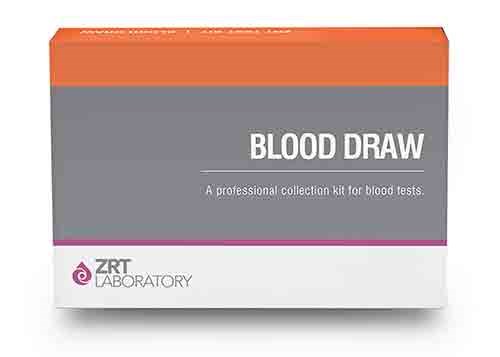SERUM TESTING
Serum tests are performed by drawing blood from a patient and spinning it down to separate the cellular components from the liquid serum, which contains soluble analytes such as hormones. While lacking the convenience and long-term stability of dried blood spot, serum can be used to measure a wider array of analytes.
Blood serum is a broadly accepted method for measuring a wide variety of analytes including steroid, thyroid and peptide hormones (e.g., LH & FSH). In certain cases, it offers a suitable alternative to measuring hormones in saliva, dried blood spot and dried urine.
Serum testing is a reliable method for measuring endogenous hormones – those produced naturally by the body. For patients not supplementing with hormones, serum is just as accurate as any of the other testing methods offered by ZRT.
For patients who supplement with patch or pellet steroid hormones, serum testing is also a reliable method. However, for patients who supplement with oral, topical or vaginal steroid hormones, saliva and blood spot provide more accurate results. Refer to our Testing & Supplementing Guide below for recommendations on ideal uses for each testing method.
Serum testing is not something new to ZRT. When we first developed finger-prick dried blood spot testing for steroids, thyroid hormones, and peptide hormones over twenty years ago, we normalized the results to the same hormones derived from venipuncture serum. For endogenously produced hormones we found dried blood spot and serum results to be quantitatively equivalent, making the transition from capillary whole blood dried on filter paper (dried blood spot) to serum testing simple. Today, we have expanded our serum testing to offer a wider variety of analytes available to test.
Review our Testing & Supplementing Guide
For practitioners, some are just more familiar with serum/plasma test results and want to stick with that method of testing. For patients, sometimes it is easier to get insurance reimbursement with serum testing. For ZRT, there are a few tests we have wanted to commercialize but have not been able to develop in dried blood spot.
Analytes we offer in serum cover some of the most common female and male hormones associated with the endocrine system, which encompasses our most popular tests that evaluate the hypothalamic-pituitary-gonadal (estradiol, progesterone, testosterone, LH, FSH, prolactin (PRL)), adrenal (DHEAS, cortisol), and thyroid (free T3, free T4, TSH, TPOab) axes.
We also offer a serum test for ferritin (iron status), which is linked to thyroid hormone and hemoglobin synthesis. Iron is an essential element required for the thyroid-synthesizing enzyme thyroid peroxidase, and for the iron present in red blood cells.
Learn more about ZRT's serum profiles in our Female & Male Profiles in Serum Provider Data Sheet.
ZRT's reports include a range of patient symptoms, which provide deeper insight into patient conditions. We also include personalized comments created by an AI developed at ZRT that helps correlate hormone levels and symptoms to deliver real understanding. This is unique to ZRT – not something that any other serum testing lab can provide.
To restore the vital balance of hormones, we first need a detailed, accurate measurement of hormone levels. Not just numbers, but an assessment that offers real meaning.


